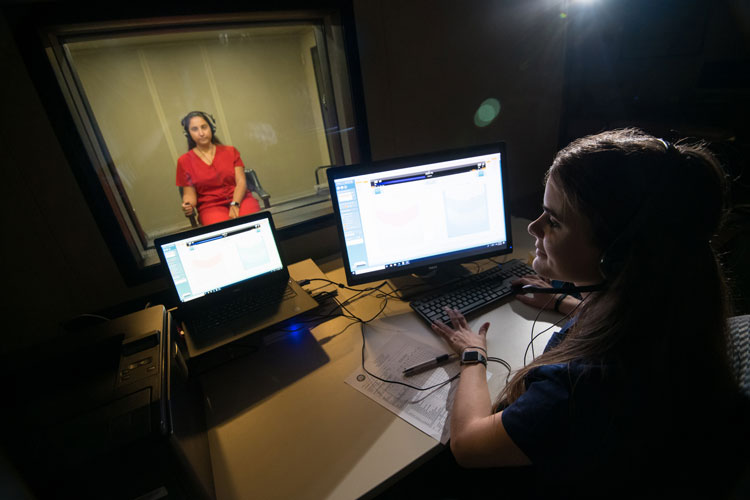
UM program makes improvements on research, clinical spaces
U.S. News and World Report has ranked the University of Mississippi‘s Department of Communication Sciences and Disorders among the nation’s best.
Ranked at No. 61 among public universities, the department remains the top-ranked in Mississippi and is among the top 100 programs in the United States. The Ole Miss program is No. 92 overall, including both public and private universities, and has moved up 49 spots from its 2016 ranking.
“This ranking means our program is highly visible and is recognized within the state as the top program,” said Vishakha Rawool, UM chair and professor of communication and speech disorders. “We attract top students to the program with a 100% passing rate on the PRAXIS exam and a nearly 100% on-time graduation rate.”
The department, part of the university’s School of Applied Sciences, offers bachelor’s and master’s degrees in communication sciences and disorders. CSD students have unique, hands-on clinical and research opportunities that prepare them to work with adults and children across a variety of settings, including hospitals, schools, health departments and research centers.
The department also aids in the diagnosis and treatment of communication disorders, which include hearing, speech, language, developmental problems and other related disorders, through the University of Mississippi Speech and Hearing Clinic. The clinic offers quality speech-language-hearing services to patients and also provides an excellent way for graduate students to gain hands-on experience.
The department has made several changes recently to clinical and research spaces that Rawool believes could have contributed to the program’s improved ranking.
“We (the speech and hearing clinic) moved from George Hall, with very limited space, to the South Oxford Center, which was renovated to allow clinical service delivery,” Rawool said. “We can now see more clients, hold group therapy sessions and allow both parents and undergraduate students to observe the therapy sessions.”
The department also recently expanded its research laboratories, adding eight more laboratories for students and faculty.
“The larger laboratories allowed us to attract and hire three faculty members with expertise in various areas of speech-language pathology,” Rawool said. “The large laboratory space allows students to more easily participate in ongoing research projects.”
Additionally, the department has expanded space for the HILL Language and Literacy program, a language therapy program for young children in the Oxford community with moderate to severe language disorders.
“My family has been involved with the HILL program since my daughter was 3 years old,” said Anastasia Jenkins, an Oxford native. “At that time, she was still not talking and irritated by a lot of sensory stimuli, so we were more than panicked. We were really at a loss for how to best move forward with getting her the help she needed.”
Jenkins enrolled her daughter in the HILL summer program in 2018. Based on the improvements her daughter made that summer, Jenkins decided to enroll her again full-time in the fall.
“Throughout that first year in HILL, the team helped her teachers work with her, providing them with the skills that they needed, and also worked with my daughter one-on-one each day,” Jenkins said. “They answered our questions, let us share our frustrations and worked with us to help think through so many decisions regarding school and everyday life.
“They were amazing in noticing her growth, adapting their approach to therapy and ‘letting her fly’ when she was ready.”
Winston Collier moved to Oxford with his family to enroll his son in language therapy through the HILL program. The program offered daily intervention and even home-based speech and language services to make sure Collier’s son was getting the support he needed.
“My son is advancing in school and now has grade-level appropriate reading and writing skills,” Collier said. “It’s really been almost a miracle, and we credit much of that to the things he learned through the HILL program.”
Collier said that one of the most beneficial results from the program was the relationship his son formed with the graduate students who worked with him.
“It’s made a difference, not just because of the impact it had on my son, which was immeasurable, but also because these graduate students that worked with our son became members of our family,” Collier said. “We’ve spent many hours with these grad students, and they care deeply about my son and our family, and that has been a really special byproduct of the program.
“I think the future of this field is bright if these young men and women are any indication of the talented young folks the CSD program is putting out into the field.”
By Meaghan Flores



